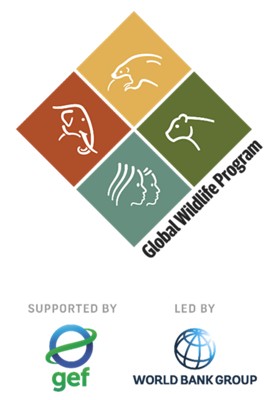Changing people’s behavior can be complex; even as people intend to do the right thing, they do not always behave accordingly. Impactful messages can bridge this “intention-action” gap by making the desirable alternative more enticing, fun, and appealing to the target audience, by harnessing social influence, using relevant consequences, and increasing the resonance of an initiative. There is growing evidence about what works in designing effective communications to change people’s behavior. This training increased awareness around the creation of impactful messaging for a given target audience.
- Overview
- AGENDA
- RESOURCES
- RELATED
The World Bank, through the GEF-funded Global Wildlife Program (GWP), collaborated with TRAFFIC to host the third in a series of virtual technical knowledge exchanges on behavior change. The goal of the series is to support GWP countries as they integrate behavior change more effectively into their projects. This workshop brought together 33 participants from 10 GWP countries in Africa, Asia and Latin America.
Participants were given the opportunity to interact with experts in the field and gained insights from those who have worked with creative agencies. The discussions centered around challenges, lessons learned, and successful adaptations. The event offered an opportunity to explore areas where additional information or bilateral support could help projects aiming to incorporate similar behavior change strategies under tight timelines and with limited resources. It was also relevant for GEF-8 teams integrating best practices into their project designs.
Workshop Summary
The context behind researching and developing an impactful message.
Research relies on a mixed methods approach with quantitative and qualitative data. This helps bring into focus the breadth of an issue, root factors and key decision makers, and nuances that drive behaviors, leading to an understanding of how to create energy for action. A mixed methods approach helps account for response bias by including a combination of interviews with stakeholders and key informants, desk research, reviews of online literature and academic research, and social listening.
To develop an impactful message, one must understand the audience with an eye towards identifying who is persuadable. This helps identify the message’s ultimate beneficiary. For example: Who is doing the poaching and why? Who is influencing the poaching? How mutable is the behavior?
Developing an impactful message is a four-step process:
1) Determine the audience. Identify a beneficiary of the changed behavior. Who is connected to the beneficiary? What does the world look like around them and what does that look like day to day?
2) Determine who can effect change. Is it the primary beneficiary? Who holds power? Will the poacher face ostracization/will they be breaking a social norm? What are we asking people to conform to or go against? What is the policy and legal environment?
3) Determine your message. What behavior can be changed? Are they aware of the behavior? Can they change it? Are there pre-existing attitudes, and can they be changed?
4) Determine the voice. Is the message credible and personal? What is the tone? Is it clear? Does it convey the right emotion? Is it memorable?
An impactful behavior change message has four key elements:
1) It is tailored to an audience that is motivated to act.
2) It speaks to the audience’s interests, emotions, and desires.
3) It encourages positive behavior by avoiding discouraging and negative messaging.
4)It leads to a simple action audiences can take.
For disseminating messages, consider including popular radio and television programs, working with faith-based groups and cultural organizations, print materials, infographics, and social media.
After the presentations, participants were asked to break out into three groups and practice developing messages for impactful behavior change. The scenarios were: a local community dealing with human wildlife conflict, law enforcement dealing with poaching, and sustainable tourism. At the end of the breakout session, each group presented solutions for their scenario and participants voted for the most impactful message.
Inputs from the workshop will help develop a GWP Guidance Note on Developing an Impactful Behavior Change Message.
• Welcome and Introduction by Gayle Burgess, Behaviour Change Programme Leader, TRAFFIC
• Presentations by Jerrell Chow, Senior Strategist, Love Frankie and Missie Thurston, Vice President of Marketing and Communications, Population Media Center
• Q&A
• Breakout groups discussions
• Wrap-up and next steps
GWP E-library: Behavior Change for Wildlife Conservation
Presentation on "'How to Create a Suitable Message for Impactful Behavior Change"
Workshop: Social Research for Conservation Insight and Impact Evaluation
Webinar: Scaling Up Efforts to Reduce Demand for Illegal Wildlife Products
Knowledge Exchange on Behavior Change Approaches to Support Wildlife Conservation
E-library: E-library of resources on behavior change
Website: Global Wildlife Program

Date: May 30, 2024
Time: 07:41 AM - 07:41 AM ET
Location: Online
